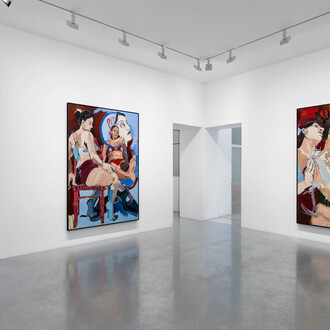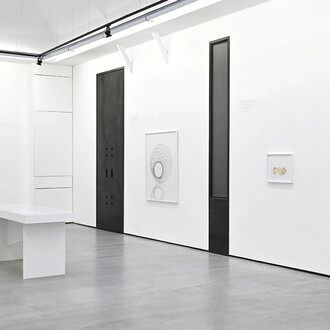Emmanuel Perrotin has first exhibited Eric Duyckaerts in 1991 and collaborated with him for more than 15 years. This Fall, the gallery pays tribute to the Belgian artist who passed away last January. On this occasion, the gallery shows one of his famous video including Conference on the Hand (1993) and Magister (1993), among others.
On the opening day, a lecture with Christine Macel, chief curator of the Centre Pompidou and Eric Mangion, director of the Art Center of the Villa Arson, is organized at the gallery.
For years now Duyckaerts has developed a body of work based on lecture-performances, videos, objects, drawings, and writing, including a book on certainty, called Hegel ou la vie en rose. In a 1993 exhibition titled The Hand with Two Thumbs—a lecture, a video, drawings, and a cast model of a hand with two thumbs—he queried the curious fact that we have one upper arm bone, the humerus, connected by an elbow to two lower-arm bones, radius and ulna, which meet at a wrist’s junction of little bones and culminate in five digits, four fingers and one thumb on each hand. Why not two thumbs or six digits per hand, he asks? Synergy, where one plus one can equal five—six in his case—is one answer to such evolutionary conundrums (about sums being greater than parts). In Duyckaerts’ phenomenalism—a doctrine that reality is founded on objects and observations-subjects are distorted in ways that are comically plausible—but more than just being absurd along the lines of, say, American stand-up comic Steven Wright.
His methodology partly derives from seventies conceptual and performance art. But in his epistemology—his projected system of knowledge… the Whys? and What-ifs? of his artistic curiosity—he adds the escapism of philosophic comedy: a therapeutic fiction, which is also often constructed around theoretically plausible distortions. But his distortions are based on facts, history, and the development of thinking from cosmological analogs to mathematical logic. Again Duyckaerts: If there’s a discrepancy between certainty and truth, the certainty of the discrepancy sabotages its truth.
By pushing the plausible limits of pattern-making (as descendant from Homo faber), ways of thinking (to we Homo sapiens), and the provocations of humor (Homo ludens)—he piques the imagination and projects further recognitions about the build-ing blocks of symbolism and evolution, about repetition and process, about “words and rules” (to borrow the title of cognitive scientist Steven Pinker’s book on “the ingredients of language”), and about meaning and use, which, following Wittgenstein’s lead, is just about everything.
















